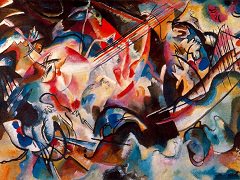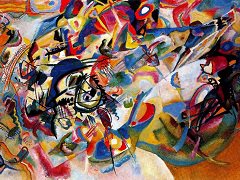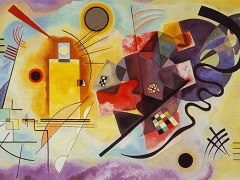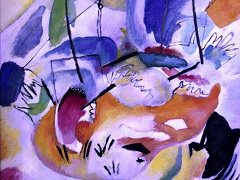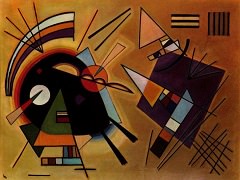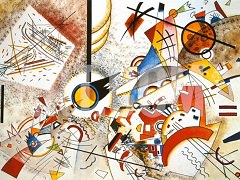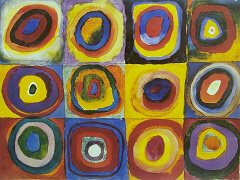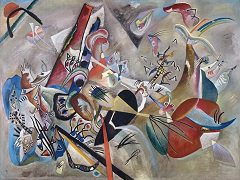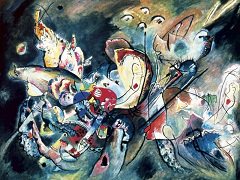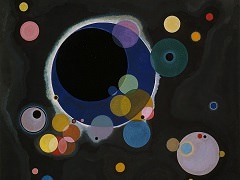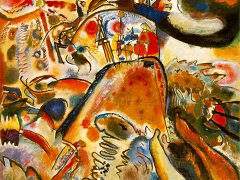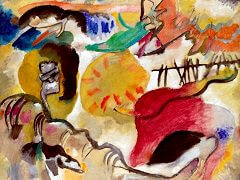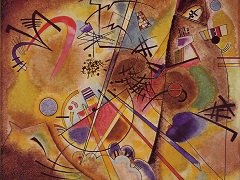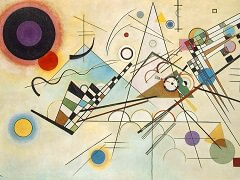Painting with White Border, 1912 by Wassily Kandinsky
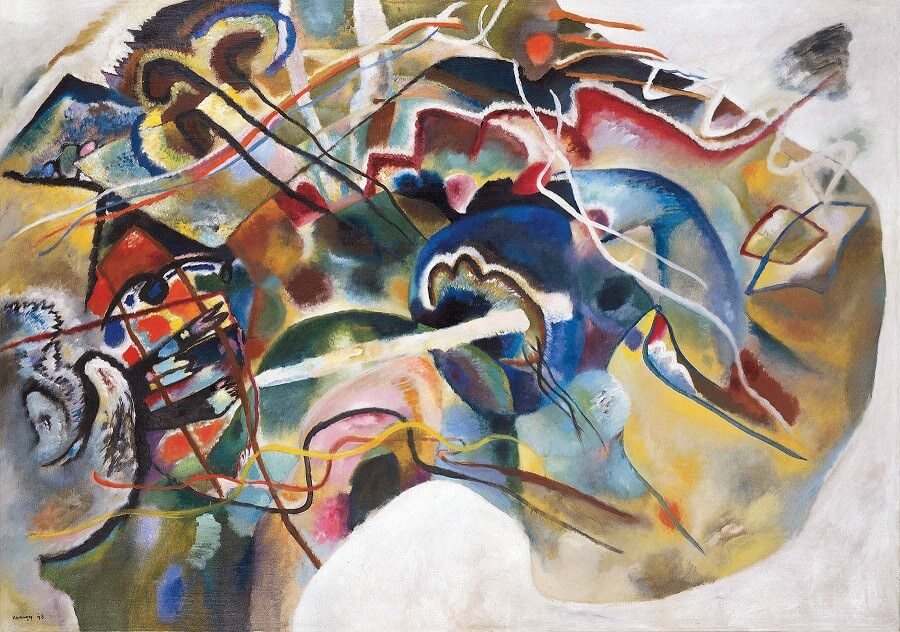
Wasily Kandinsky's canvas, Painting with White Border was inspired by a trip the artist took to Moscow in fall 1912. Upon his return to Munich, where he had been living intermittently since 1896, Kandinsky searched for a way to visually record the "extremely powerful impressions of his native Russia that lingered in his memory. Over a period of five months, he explored various motifs and compositions in study after study, moving freely between pencil, pen and ink, watercolor, and oil. After he produced at least 16 studies, Kandinsky finally arrived at the pictorial solution to the painting: the white border. In his seminal 1911 treatise Uber das Geistige in der Kunst. Insbesondere in der Malerei (On the Spiritual in Art: And Painting in Particular), Kandinsky wrote that the color white expresses a "harmony of silence . . . pregnant with possibilities?
A rare glimpse into Kandinsky's creative process, Kandinsky's Painting with White Border reveals the gradual and deliberate way the artist sought to translate his ideas into a bold new language of abstraction.

